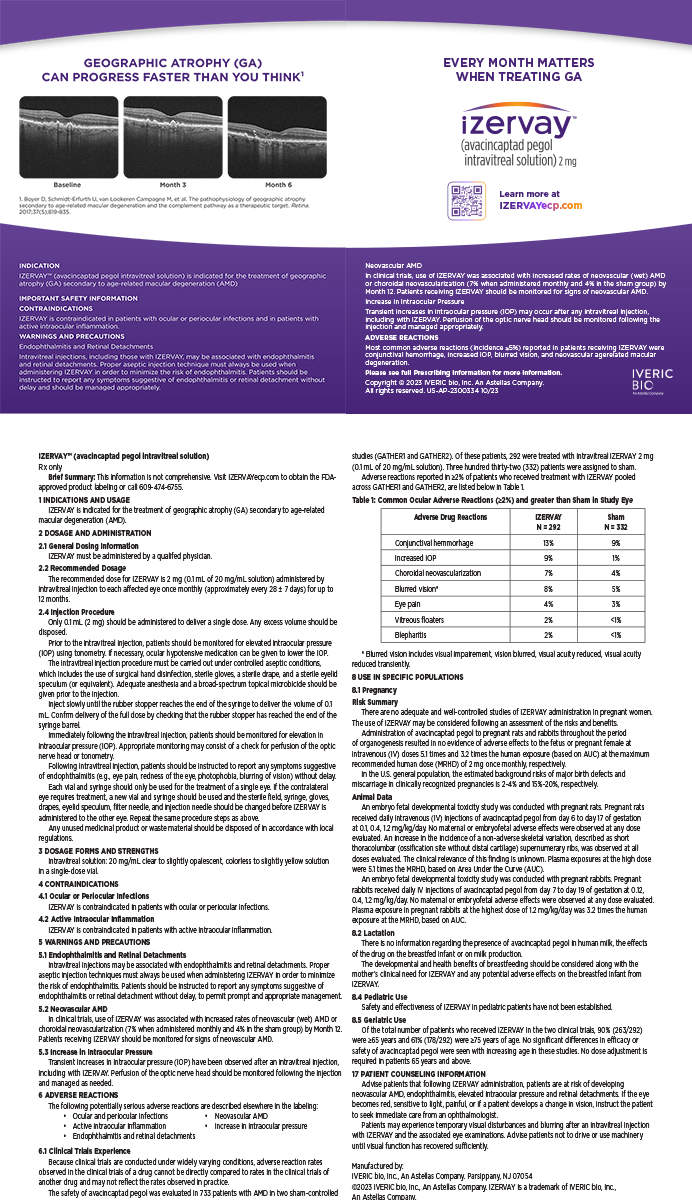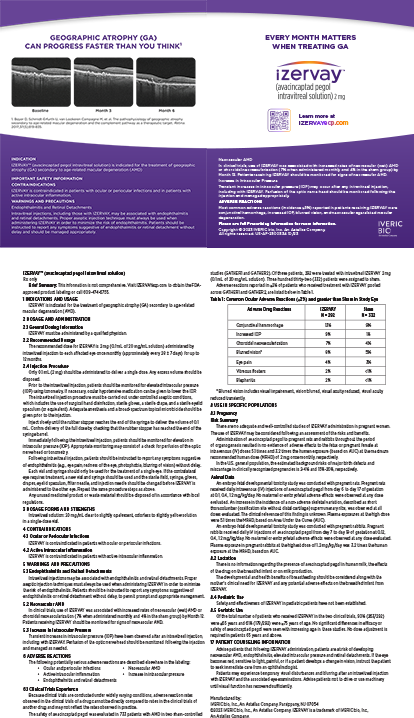The Synchrony lens (Abbott Medical Optics Inc.; not available in the United States) has a high-plus anterior optic connected by spring haptics to a posterior optic with variable negative power. The idea behind this three-dimensional design is to mimic the natural lens and how its response to the contraction and relaxation of the ciliary muscle increases paraxial power and provides accommodation. This design maximizes accommodative amplitude with consistent results,1 which is an advantage over single-optic IOLs.
The performance of the dual-optic accommodating IOL has been discussed2 and objectively demonstrated for up to 4 years postoperatively, both with dynamic high-resolution ultrasound biomicroscopy and with iTrace aberrometry (Tracey Technologies).3 A new generation of this lens, the Synchrony Vu (now available in Europe but not in the United States) incorporates changes in design to improve near visual acuity.
ASPHERIC OPTICS
A central aspheric zone with negative spherical aberration was added to the IOL. Again, the objective is to mimic the natural lens, which shows greater changes in optical power in its central region during accommodation than in its more peripheral regions.4 The benefit of the central aspheric zone is greatest when the pupil constricts during near viewing.
The new design increases depth of focus through negative spherical aberration while maintaining optical quality under photopic and mesopic conditions. Testing under photopic conditions demonstrated preservation of optical quality with the new optic profile per the International Organization for Standardization's standards and a 1.00 D increase in depth of focus compared with the earlier-generation lens. Under mesopic conditions, there was also an improvement in optical quality (modulation transfer function) with the Synchrony Vu compared to the original Synchrony lens.5
CLINICAL BENEFITS
Recently, my colleagues and I conducted a prospective case series of patients bilaterally implanted with the Synchrony Vu accommodating IOL after standard phaco surgery for the treatment of visually significant cataracts. Thirty-one patients (61 eyes), 40 years of age or older (mean age, 70 ±7.5 years), were recruited at two sites, one in Portugal and one in Spain. We assessed patients' uncorrected and distance-corrected near (40 cm), intermediate (80 cm), and distance (4 m) visual acuities using Early Treatment Diabetic Retinopathy Study (ETDRS) charts. We also tested their mesopic contrast sensitivity with and without glare using the Optec 6500 (Vision Sciences Research Corporation). Additional data included manifest refraction, dysphotopsia such as halos and glare, complications, and adverse events.
Slit-lamp examinations during the early postoperative period found no evidence of significant inflammation or other complications (Figure 1). Six months postoperatively, all binocular patients had a distance BCVA of 20/25 or better. Binocular UCVAs of 20/25 or better for distance and intermediate distance were achieved by 94.4% and 77.8% of patients, respectively. Binocular near visual acuities of 20/32 or better (both uncorrected and distance corrected) were achieved by 72.2% of patients. Eighty percent reported not using visual correction for near (Figure 2).
The mean spherical equivalent was -0.63 ±0.61 D, with 84.6% of eyes within ±1.00 D of the target refraction. Mesopic contrast sensitivity (n = 58 eyes) was within a normal range, both with and without glare.
OTHER CONSIDERATIONS
The main advantage of the dual-optic accommodating IOL is that it provides excellent quality of vision without compromising contrast sensitivity and with a very low incidence of dysphotopsia such as halos and glare due to the lens' monofocal optics. Patients' visual acuity is excellent for distance and intermediate distance and very good for near, which translates as high levels of spectacle independence (aforementioned study by my colleagues and me and also research by Ossma et al2). A preloaded injector facilitates the easy and safe implantation of the IOL through a small incision.2 Based on my experience, the study by my colleagues and me, and the research of Ossma et al,2 refractive stabilization is slower than with a single-optic IOL due to an initial period of transient myopia. Emmetropia is usually achieved 4 to 6 weeks after surgery. For this reason, many patients prefer to wait for stabilization before undergoing surgery on their second eye.
CONCLUSION
The new dual-optic accommodating IOL represents an important addition to the alternatives for presbyopic correction during cataract surgery. With its enhanced optic profile and improved depth of focus, the Synchrony Vu provides very good near and intermediate vision without sacrificing distance visual acuity and quality of vision.
Eduardo F. Marques, MD, is head of the Department of Ophthalmology at Hospital da Cruz Vermelha Portuguesa in Lisbon, Portugal. He is a paid consultant to Abbott Medical Optics Inc. Dr. Marques may be reached at +351 217 713 566; em.lx@netcabo.pt.
- McLeod S, Vargas L, Portney V, Ting A. Synchrony dual-optic accommodating intraocular lens. Part I: optical and biomechanical principles and design considerations. J Cataract Refract Surg. 2007;33:37-46.
- Ossma IL, Galvis A, Vargas LG, et al. Synchrony dual-optic accommodating intraocular lens. Part 2: pilot clinical evaluation. J Cataract Refract Surg. 2007;33:47-52.
- Marques E, Bohórquez V, Alarcon R. Objective and subjective evidence of accommodation 4 years after implantation of dual-optic accommodating IOL. Paper presented at: The ASCRS Symposium on Cataract, IOL and Refractive Surgery; March 27, 2011; San Diego, CA.
- Vilupuru A, Roorda A, Glasser A. Spatially variant changes in lens power during ocular accommodation in a rhesus monkey eye. J Vis. 2004;4(4):299-309.
- Marques E, Kasthurirangan S, Evans S. Development of an optically enhanced dual-optic accommodating intraocular lens. Paper presented at: XXX Congress of the ESCRS; Milan, Italy; September 10, 2012.


